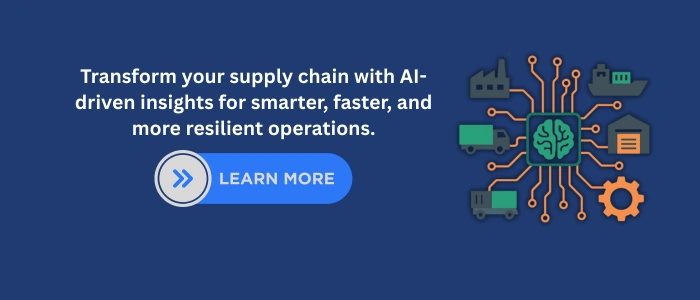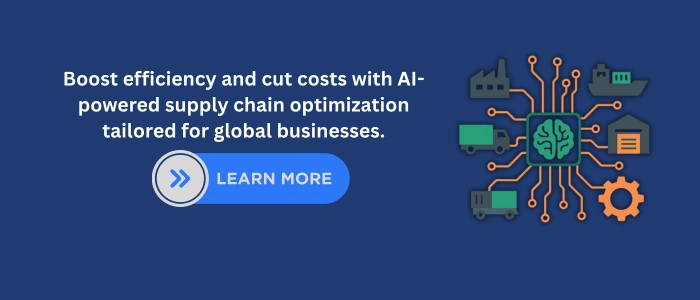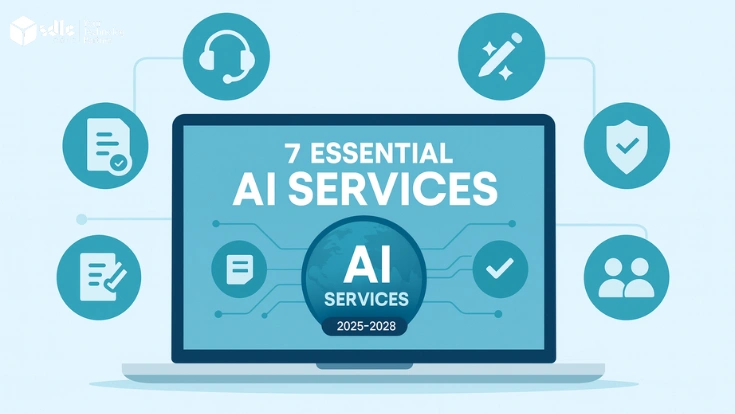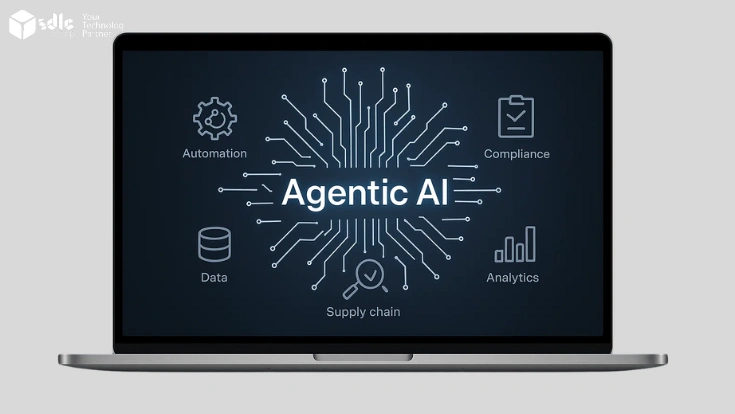Introduction
AI in supply chain management is transforming how companies handle global logistics, procurement, and production. Supply chains are the backbone of modern commerce, yet they face constant pressure from disruptions, rising costs, and shifting demand. Traditional planning methods fall short when conditions change rapidly, leaving organizations exposed to risk.
By applying artificial intelligence, companies now gain real-time insights, accurate forecasts, and automated decision-making tools. As a result, operations become smarter, customers experience fewer delays, and resilience improves even during uncertainty. This blog explains how AI works across supply chains, explores technical applications such as predictive analytics and machine learning, and examines its role in risk management and optimization.
Related insight: AI-Powered Supply Chain Optimization can provide tailored solutions for supply chain automation.
The Role of AI in Supply Chain Management
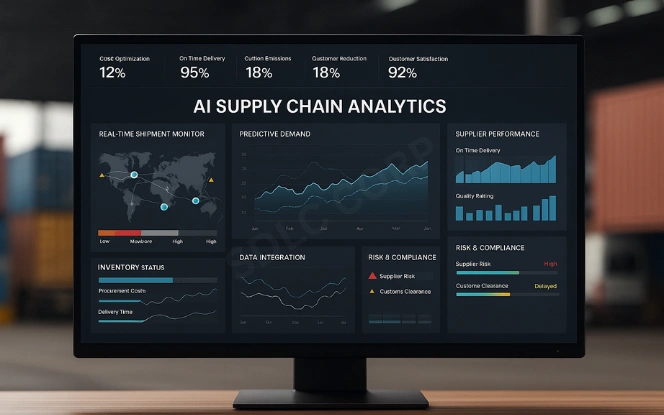
Supply chains generate vast amounts of data from suppliers, logistics networks, warehouses, and customer transactions. Historically, this information was underused because manual systems could not process it efficiently. However, AI changes this reality.
- Data Integration: AI platforms merge internal and external datasets, from sales reports to weather forecasts.
- Real-Time Tracking: With IoT sensors and connected platforms, managers monitor shipments, identify delays, and predict disruptions.
- Decision Support: AI systems recommend supplier choices, route optimization, and production schedules based on historical and real-time data.
In short, AI in supply chain management enhances visibility, supports faster decisions, and reduces human error.
Explore more on AI in Logistics to see how transportation and delivery networks benefit from automation.
Key Benefits and Supply Chain AI Solutions
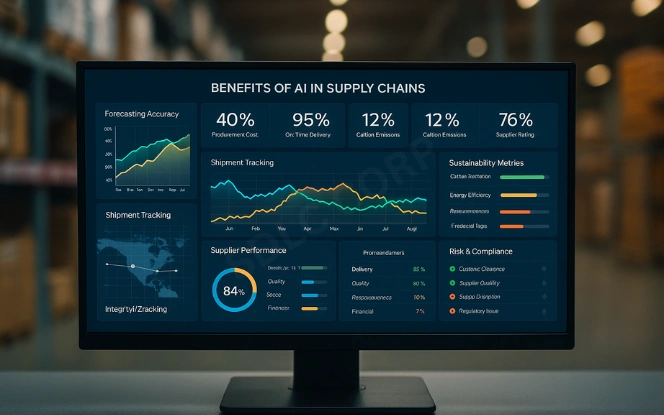
Companies adopt supply chain AI solutions to solve specific challenges. These tools focus on efficiency, cost reduction, and agility. Moreover, they offer measurable business outcomes.
- Improved Forecasting – AI-driven models combine sales history with external signals for accurate demand forecasts.
- Operational Monitoring – Continuous tracking reduces blind spots and highlights supplier issues.
- Cost Efficiency – AI identifies opportunities to cut costs while keeping service quality intact.
- Sustainability Goals – Tracking emissions helps companies move toward greener operations.
- Scenario Planning – AI prepares businesses for unexpected events by simulating disruption scenarios.
These solutions provide measurable results that align with operational needs.
Learn how Predictive Analytics Services strengthen forecasting and planning in supply chains.
AI Supply Chain Optimization in Practice
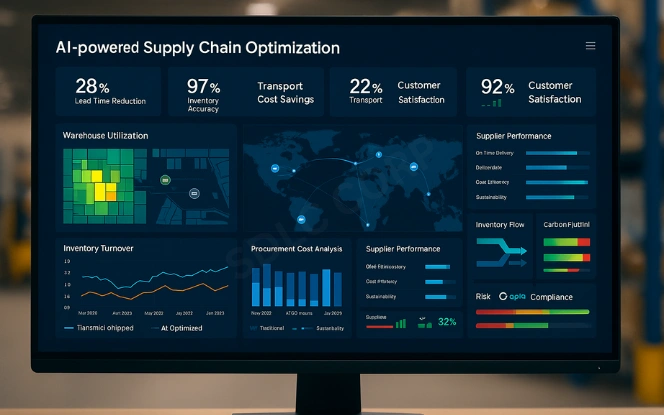
AI supply chain optimization means using algorithms and data models to improve every link of the supply chain. Unlike traditional optimization, AI adapts quickly when conditions shift.
Practical examples include:
- Warehouse Management – AI suggests layout improvements and dynamic workforce planning.
- Logistics and Transportation – AI-powered tools create efficient routes based on fuel costs, delivery windows, and congestion data.
- Procurement and Supplier Selection – AI identifies the best supplier mix to balance cost and reliability.
Consequently, businesses achieve shorter lead times, stronger inventory turnover, and higher customer satisfaction.
See how Generative AI for Supply Chain can create resilient and cost-efficient networks.
Applications of Predictive Analytics for Supply Chain
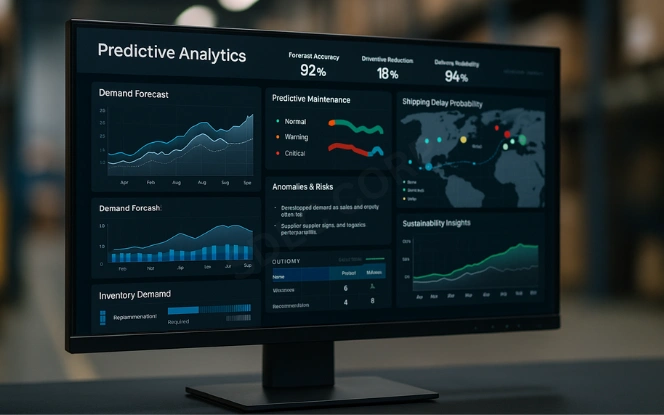
Predictive analytics for supply chain operations help businesses move from reactive problem-solving to proactive planning. In addition, it reduces the margin of error in forecasting.
- Demand Forecasting – Detecting demand spikes ahead of peak seasons.
- Maintenance Planning – Identifying risks of equipment breakdowns early.
- Shipping and Logistics – Optimizing departure schedules to reduce costly delays.
By applying predictive analytics, organizations reduce uncertainty and improve operational confidence.
Dive deeper into Machine Learning Services that power predictive analytics in supply chains.
Managing Risk with AI Risk Assessment Supply Chain
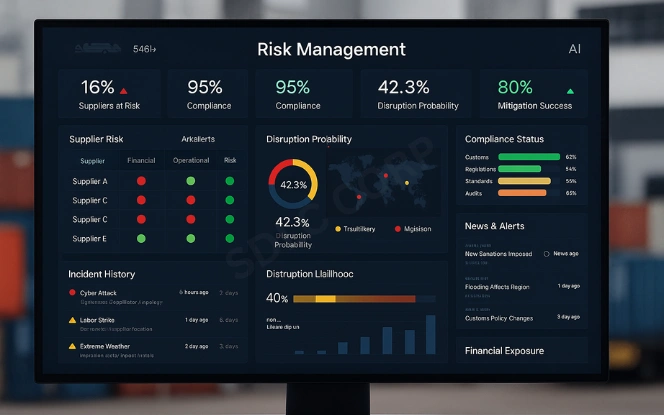
Risks in supply chains come from many directions geopolitical instability, supplier bankruptcy, cyberattacks, or natural disasters. Manual risk assessment often misses subtle warning signs.
Therefore, AI has become a vital tool for risk monitoring.
- Supplier Risks
AI tracks financial reports, news, and social media signals. Early warnings highlight potential supplier failures. - Compliance Risks
Algorithms review trade regulations and documentation to ensure shipments meet legal requirements. - Disruption Alerts
Weather patterns, regional conflicts, or labor strikes are flagged as potential threats before they escalate.
Using AI risk assessment supply chain tools allows companies to act early by diversifying suppliers, adjusting shipping routes, or increasing buffer stock. As a result, downtime decreases and customer trust strengthens.
Machine Learning in Inventory Management
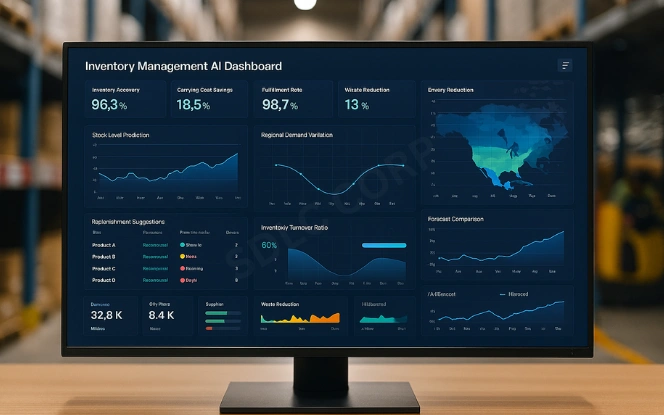
Inventory challenges often drain resources. On the one hand, excess stock raises storage costs. On the other hand, shortages create lost sales. Machine learning in inventory management addresses this balance by learning from historical and real-time data.
- Dynamic Stocking
Models analyze sales trends, seasonality, and promotional impacts to adjust inventory in real time. - Regional Optimization
Machine learning identifies demand differences across regions and recommends tailored stocking strategies. - Self-Improvement
Algorithms refine their predictions after each cycle, improving accuracy over time.
Ultimately, companies benefit from lower carrying costs, reduced waste, and better product availability.
Challenges and Considerations
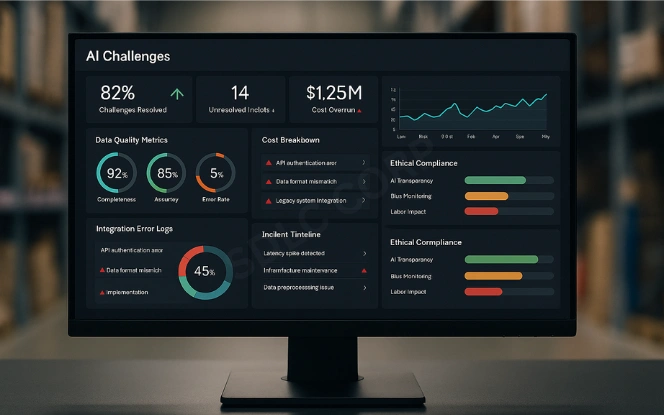
While AI offers advantages, its adoption requires a realistic approach. However, businesses must address challenges to fully unlock benefits.
- Data Quality
AI systems are only as good as the data they receive. Poor-quality data produces weak results. - Integration Barriers
Many supply chains run on legacy platforms, making AI integration challenging. - Skill Requirements
Expertise in data science, AI modeling, and supply chain operations is necessary. - Ethical and Workforce Impact
AI decisions affect jobs and communities. Companies must adopt transparent and fair practices. - Cost of Implementation
AI requires upfront investments in infrastructure, training, and ongoing support.
Therefore, understanding these considerations ensures responsible and effective adoption.
Future Outlook of AI in Supply Chains
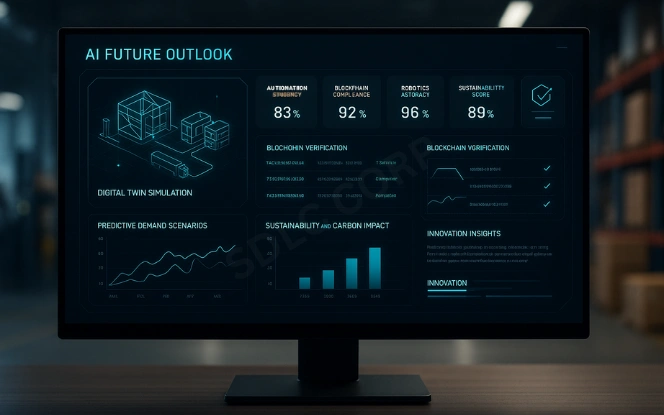
The future holds new opportunities where AI and advanced technologies combine. Furthermore, innovation will expand through connected tools.
- Digital Twins
Virtual replicas of supply chains will allow real-time simulations and performance testing. - Blockchain
Integrating blockchain with AI will create transparent and tamper-proof supply chain records. - AI-Driven Robotics
Robotics powered by AI will speed up warehouse operations, from sorting to packing. - Sustainability Monitoring
AI will become essential in measuring carbon footprints and helping companies meet global sustainability targets.
Consequently, within the next decade, AI will shift from an optional tool to a core requirement in supply chain management.
Conclusion
AI is no longer an experimental tool. It is central to creating supply chains that are resilient, efficient, and customer-focused. From predictive analytics for supply chain processes to AI risk assessment supply chain tools and machine learning in inventory management, AI provides concrete solutions to longstanding challenges.
Companies that focus on clean data, technical skills, and transparency will benefit the most. In the end, the result is a supply chain that adapts quickly, reduces waste, and ensures steady product availability even during disruptions.
Contact us SDLC corp to explore how AI can enhance your operations. Hire AI Development Services with SDLC Corp and develop solutions designed for your unique business needs.
FAQs
How Is AI In Supply Chain Management Improving Efficiency?
AI in supply chain management improves efficiency by analyzing data in real time, forecasting demand accurately, and optimizing logistics. It helps businesses reduce delays, manage inventory better, and cut operational costs.
What Are The Benefits Of Supply Chain AI Solutions?
Supply chain AI solutions enhance forecasting, reduce risks, improve supplier management, and optimize transport routes. They also support sustainability goals by tracking carbon footprints and identifying eco-friendly options.
How Does AI Supply Chain Optimization Work In Practice?
AI supply chain optimization works by applying algorithms to warehouse layouts, transportation planning, and procurement strategies. It adapts to changes in demand or supply disruptions, leading to faster delivery and higher customer satisfaction.
Why Use Predictive Analytics For Supply Chain Planning?
Predictive analytics for supply chain planning helps businesses anticipate demand surges, prevent equipment failures, and plan shipments more effectively. This proactive approach reduces risks and improves decision-making accuracy.
How Does Machine Learning In Inventory Management Reduce Costs?
Machine learning in inventory management analyzes sales data, seasonality, and external trends to balance stock levels. It reduces excess inventory, prevents shortages, and ensures products are available when customers need them.

